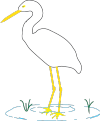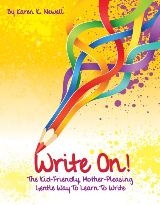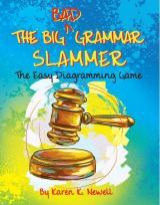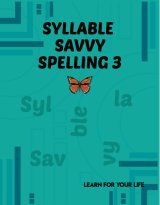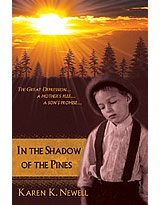Trixie Belden Editions
Ten different Trixie Belden editions have been printed. Whether you are a collector, new fan, or dealer trying to label an odd-lot of books, this list will differentiate the editions.
Thirteen Forever!
Talk about ever-lasting youth. Trixie has been thirteen-going-on-fourteen since 1948!While several generations of young readers have followed the plucky girl-detective, they did so with different editions in their hands.
A different edition comes out about every decade (but not with mathematical regularity.)
Trixie Belden's First Edition: 1948 - 1951
The Dust Jacket: #1 - 3
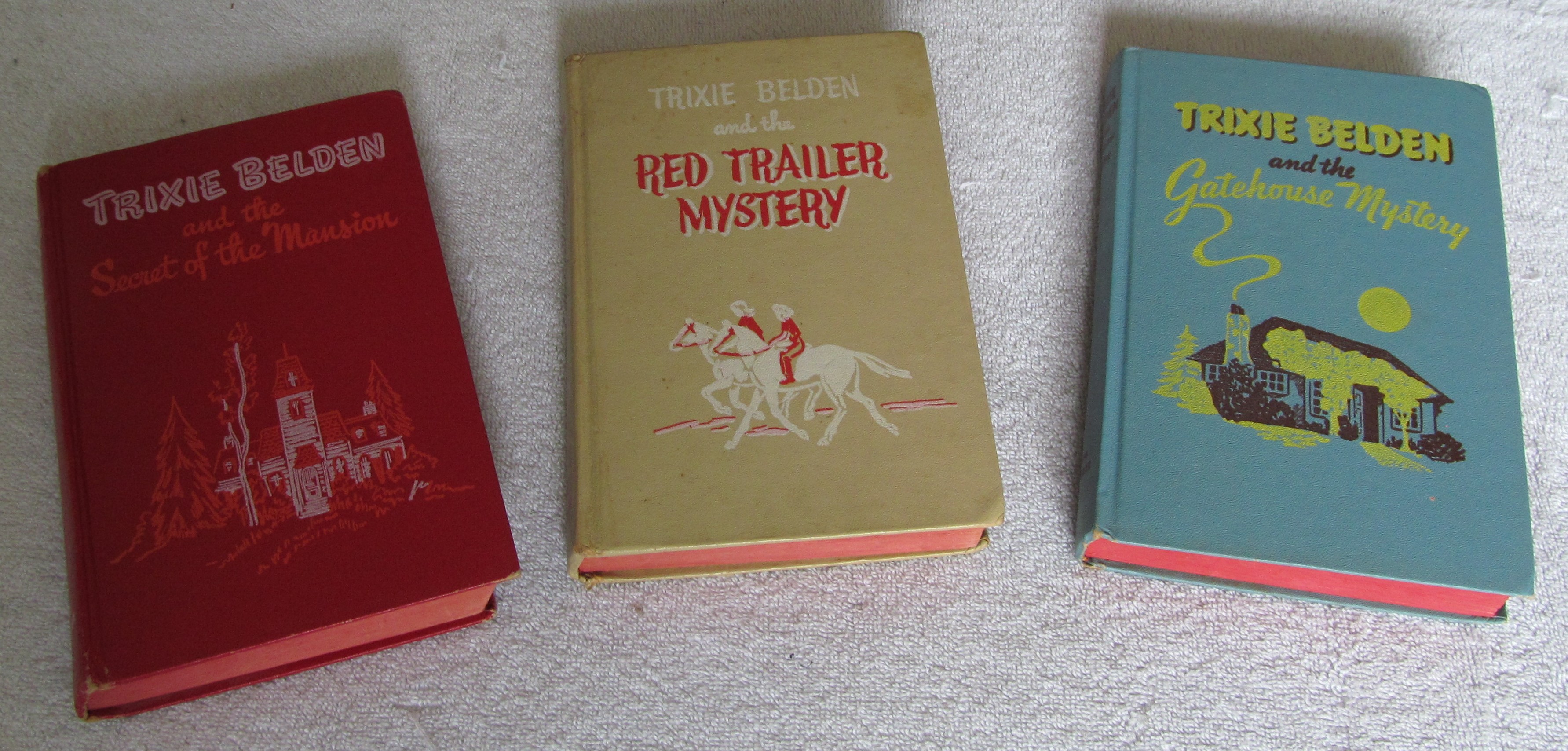

- A multi-color dust jacket wraps around the hardcover book.
- The dust jackets portray an action scene with Trixie and Honey
- The actual book cover is single-color cloth with bi-colored writing and a simple diagram.
- The inside cover (end papers) have black and white sketches. Landscaped scenes of the two girls open the first two books and the third has a collage of sketches forming a frame.
- One page black and white sketches made by Mary Stevens are sprinkled through the book. (About 12 pics)
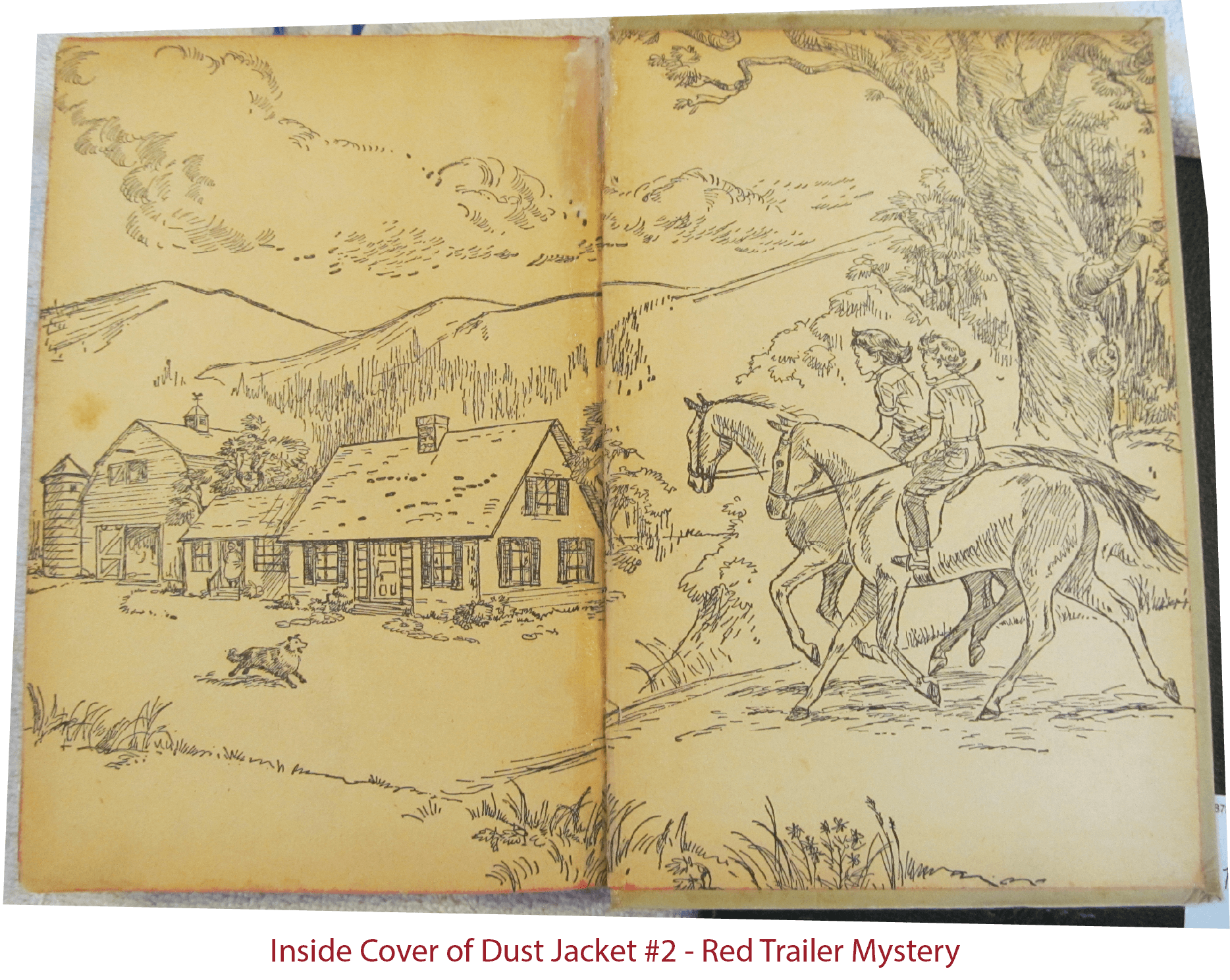
Second Edition: 1954 - 1962
The Cello Series: #1 - 10

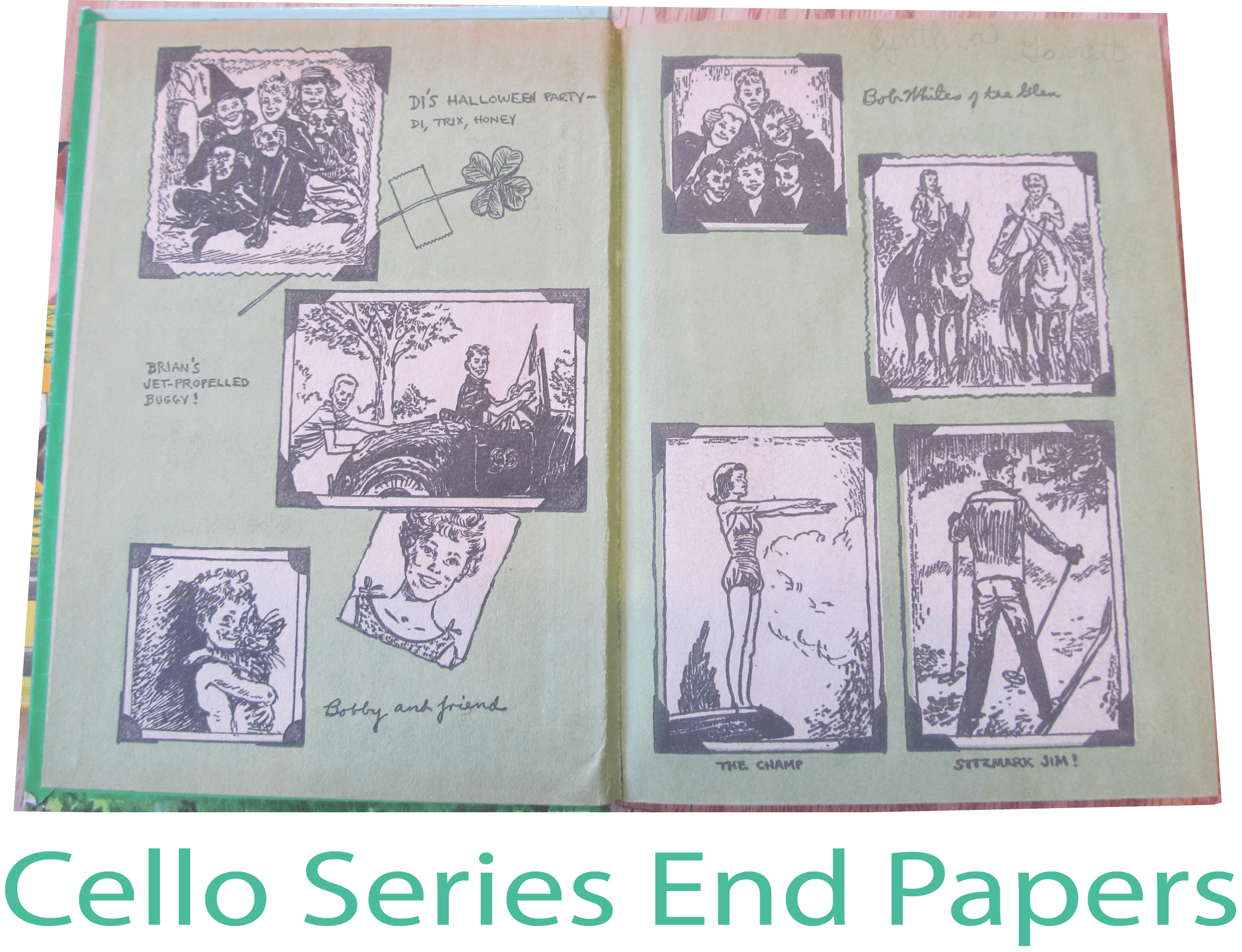
- Hard cover book with no dust jacket
- The cover is a multi-colored glossy smooth picture depicting a scene from the story
- The first three books have the same picture that was previously on the dust-jacket. But now they were printed directly onto the hard cover board.
- Just to confuse everyone, see the information about Dust Jacket Diamond Edition below.
- A thin layer of cellophane wrapped around the Cello series. On most surviving books, that layer is peeling off.
- The edges of the text block (pages the story is written on) are colored.
- The inside covers (end papers) display the Bobwhite Picture Album with old-fashioned photo corners.
- Mary Stevens was still the illustrator.
- The pics from the first edition reappear in Books 1-3.
- Several additional pictures appeared in Books #1, 2 and 3 as well.
- The scattered sketches still occupy one full page. But instead of black and white, they are accented by a single color in addition to the black outline.
- Each chapter starts with a small pictures on the top quarter page.

Durability of the Cello books
Spines are relatively weak leading to many damaged covers. (I had #2 of this series in the 1960's, and it was falling apart then.)The picture below demonstrates the cause: the text block is only attached to the spine at two points. Many books have their covers torn off or cracks between the cover and end papers.
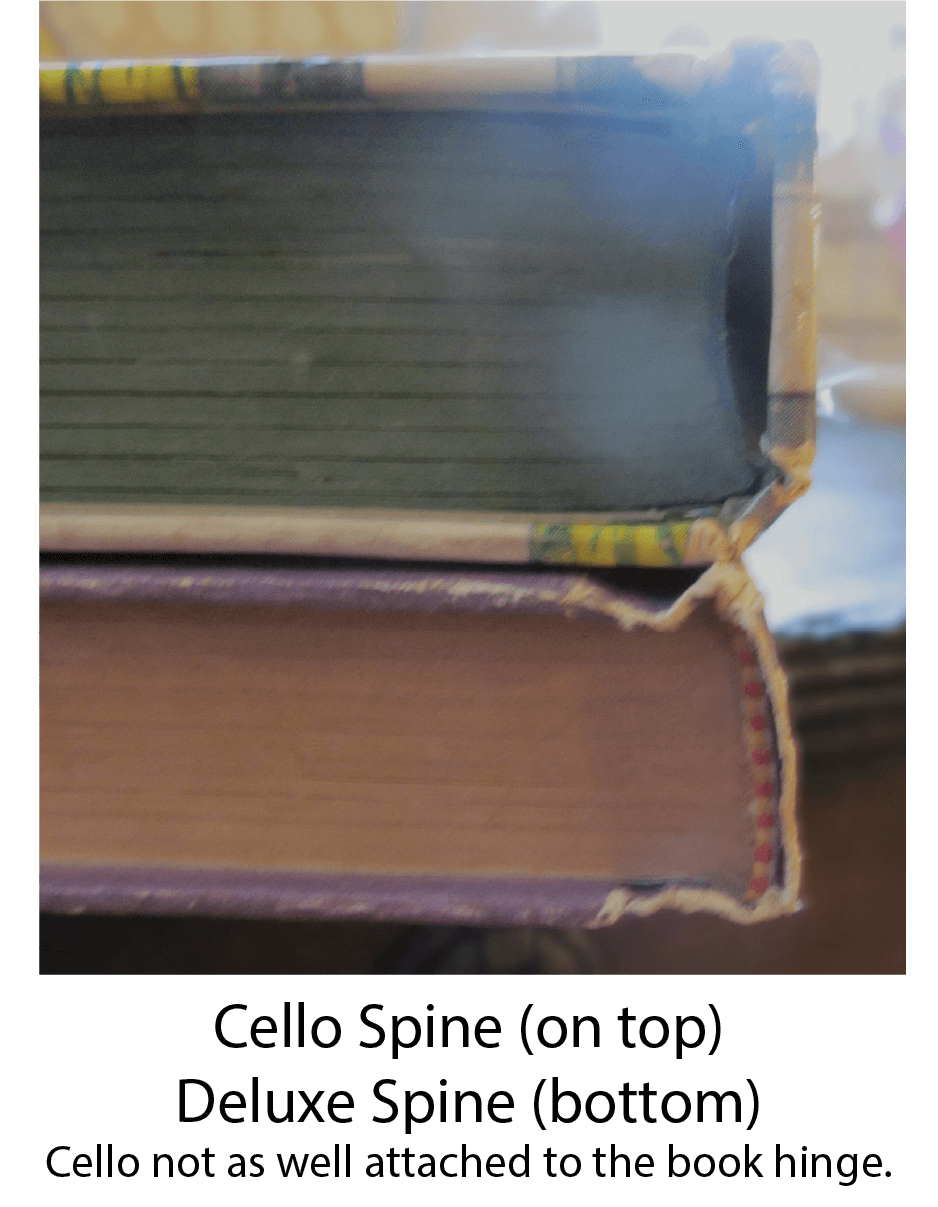
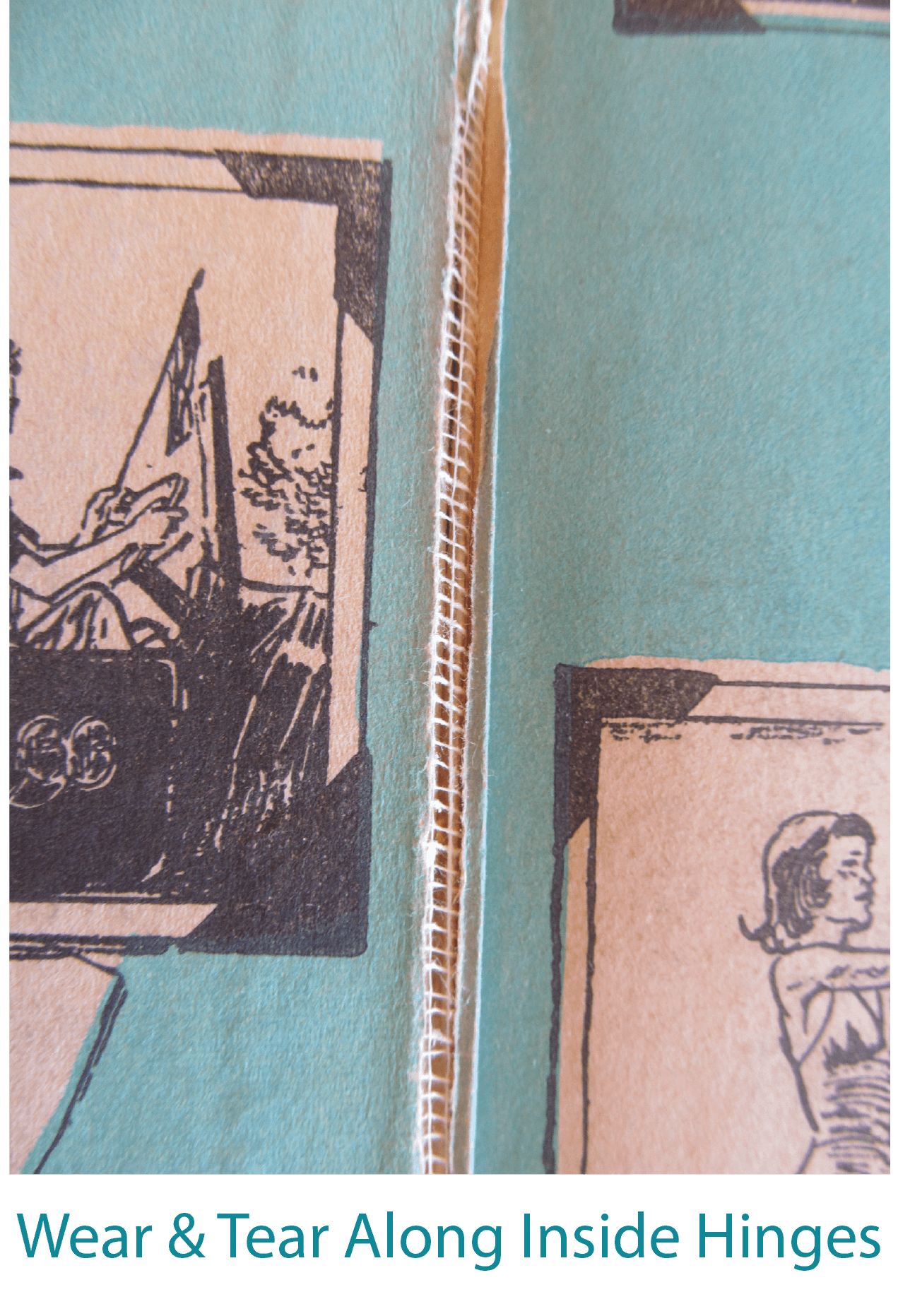
It should also be noted that Julie Campbell, the original author, wrote the first six books. After that, a variety of authors using the pen name of "Kathryn Kenny" developed the stories.
NOTE: Series vs Editions
Some will refer to the set of books (ie the "Dust Jacket" or the "Cello") as a series. Others refer to the entire collection of Trixie books as the series.Some refer to the set of books (ie "Dust Jacket/Cello") as an edition. Those who refer to them as different series, will refer to the individual titles as editions.
Why It Matters - Depending on your lingo, the "first edition" may refer to a "Dust Jacket" book. Or it may refer to the first time a book was printed. For instance, the first edition of Book #4 "The Mysterious Visitor" would be in the "Cello" format.
On these pages, we refer to the entire Trixie books as the series, and the different formats that were printed as editions. But the terminology can get confusing.
Third Edition: 1958 (rare)
The Diamond Dust Jacket of 1958
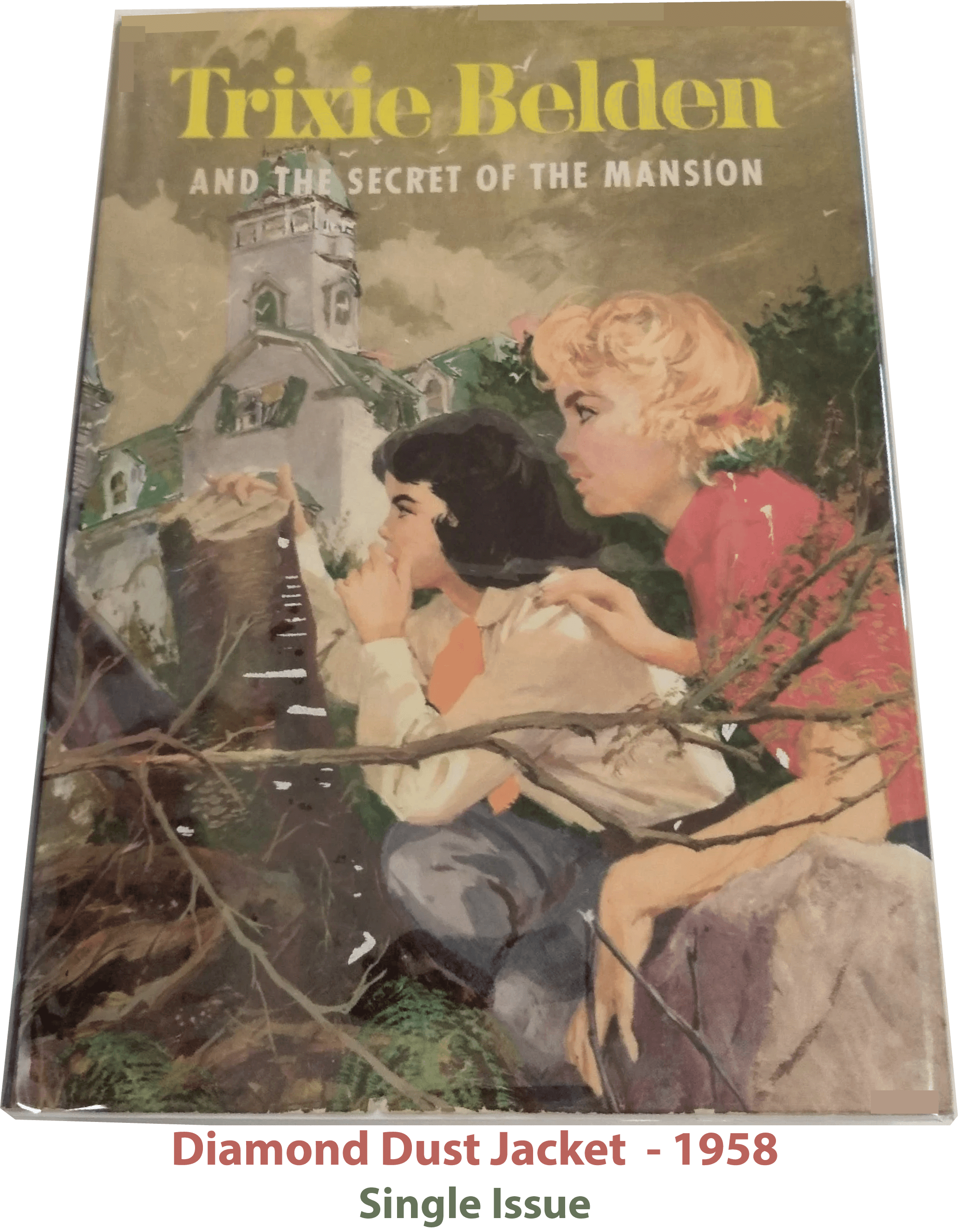
In 1958, between the time the second edition (Cello) and fourth edition (Cameo) were printed, another almost-edition appeared. Only the first book appeared in this format. And to confuse everyone, it is a hard-back with a dust jacket. Only Book #1 (Secret of the Mansion) was printed. Here's how you can tell if you have this book:
- While it has a multi-color dust jacket, the picture is different from that on #1 of the first Dust Jacket and the Cello editions. A black-haired Honey kneels next to Trixie (Honey had honey-colored hair.) The green roof of the mansion rises in the background.
- The date on the copyright page is different. It is written in Roman Numerals and says MCMLIV, MCMXLVIII (1948, 1958.) The jacket itself says 1959.
- Inside cover (end papers) do not have scenes from the story but diamond shapes with the Golden Publishing logo of a winged-lion. Golden was a division of Western.
- The actual cover of the book is pink, not red.
- Pictures inside are similar to than Cello Edition (more pictures, single color overlay rather than black and white.)
But anomalies are what literature is all about.
Fourth Edition: 1958 to 1964
Cameo Series: #1 - 13
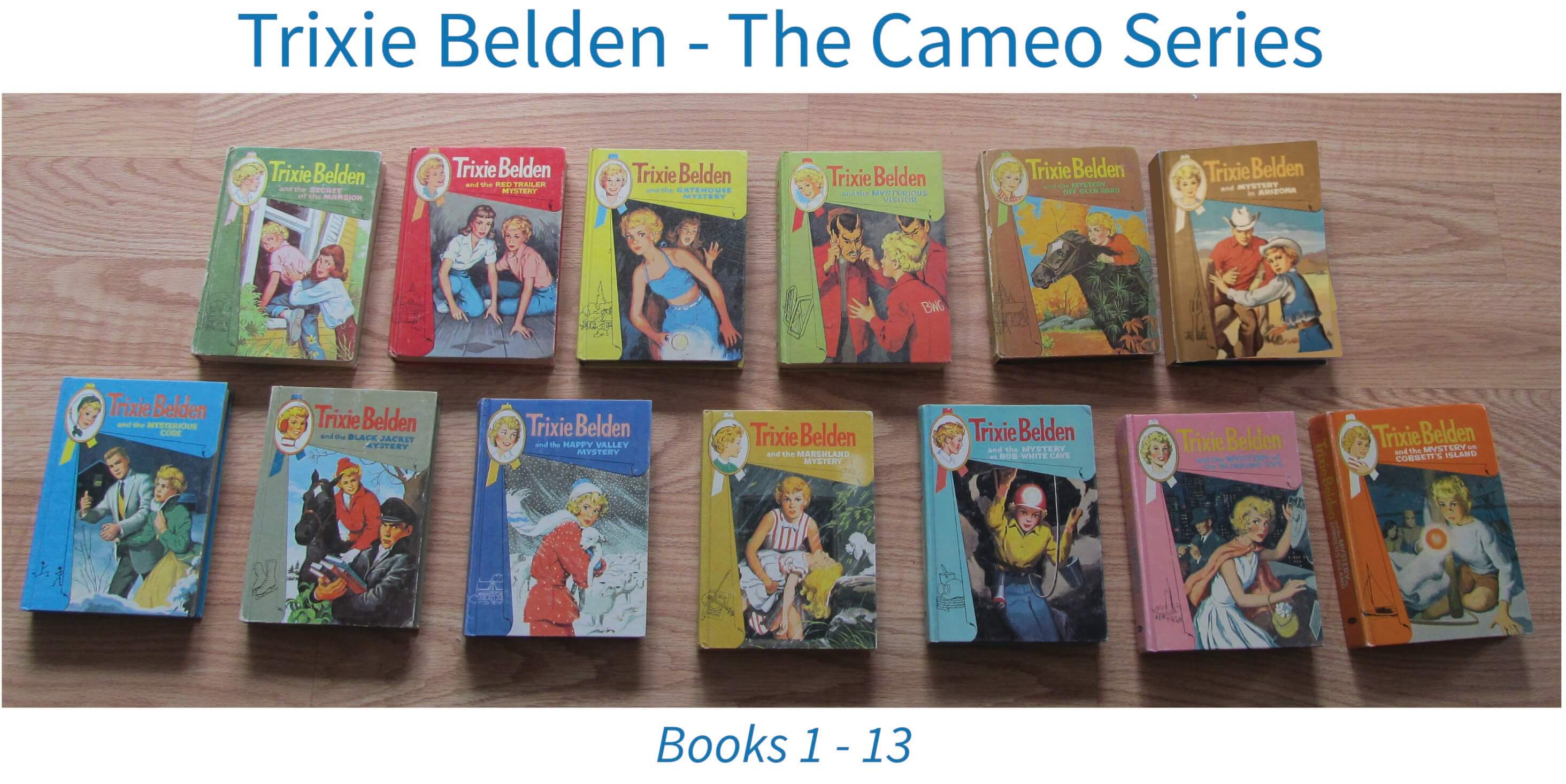
The round portrait of Trixie on the upper left corner of each front cover resulted in the name "Cameo." (A cameo was a small round portrait, sometimes worn as jewelry.)

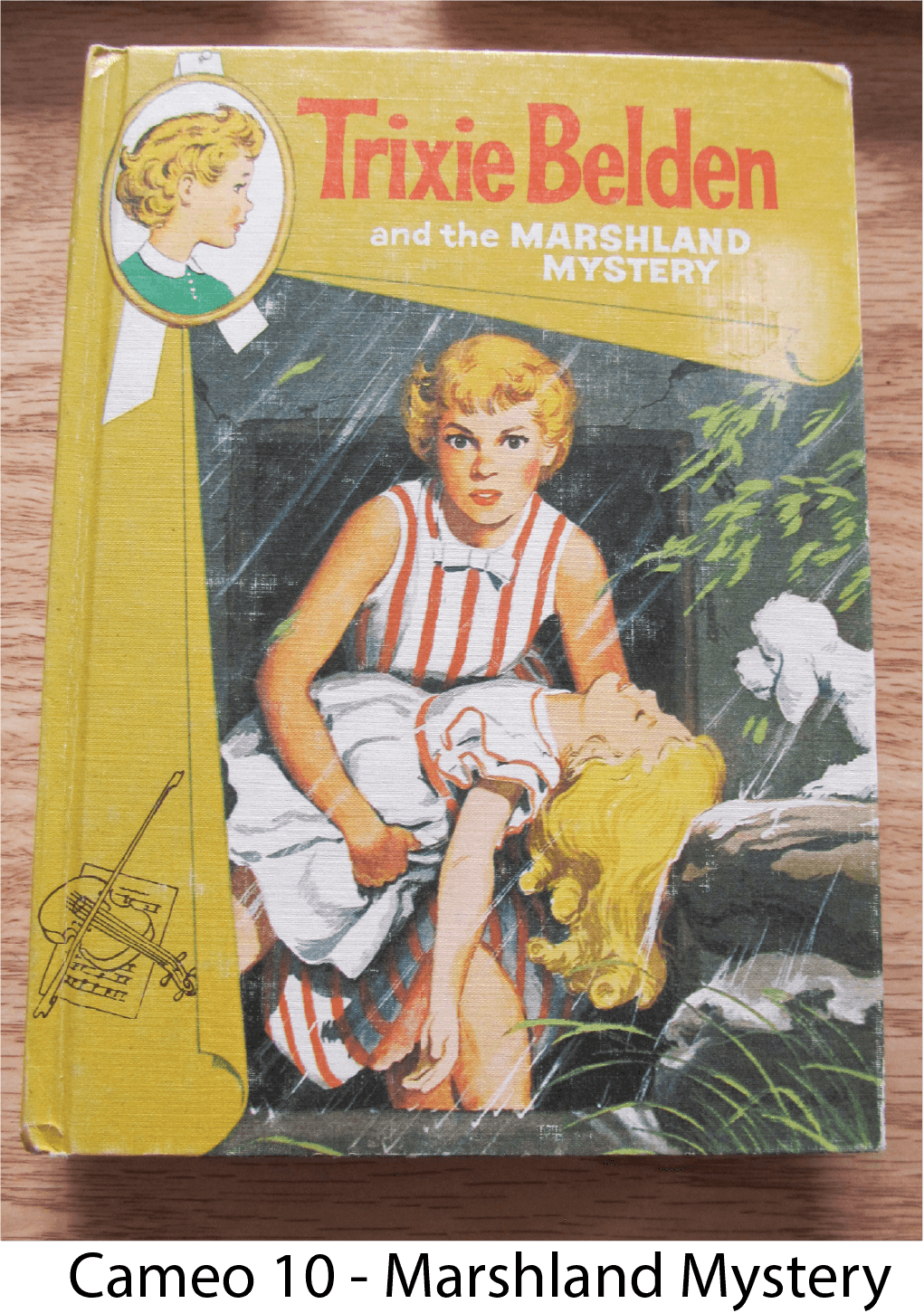 So here are the specs to this edition:
So here are the specs to this edition:
- Multi-colored hard back with a non-glossy cover.
- Each cover had a predominant color that was like a curtain over an action scene in the book.
- On the left side of the curtain was a single diagram of an object dominant in the narrative.
- Printed on each back cover: "Would you like to - solve mysteries... belong to a secret club? Ride, swim, travel, go to parties with the best friends in the world? Then the wonderful adventures of Trixie Belden are written just for you. Don't miss a single one! (See pic below.)
- To the right of that introduction the books of "Your Trixie Belden library" are listed.
- Inside covers have a plain design. No pics there.
- B & W sketches from Mary Stevens and successors have a color overlay.
- These books held up better than the Cello did.
- While a little shorter in dimension than the Deluxe that appeared a few years later, they seem to have held up at least as well.
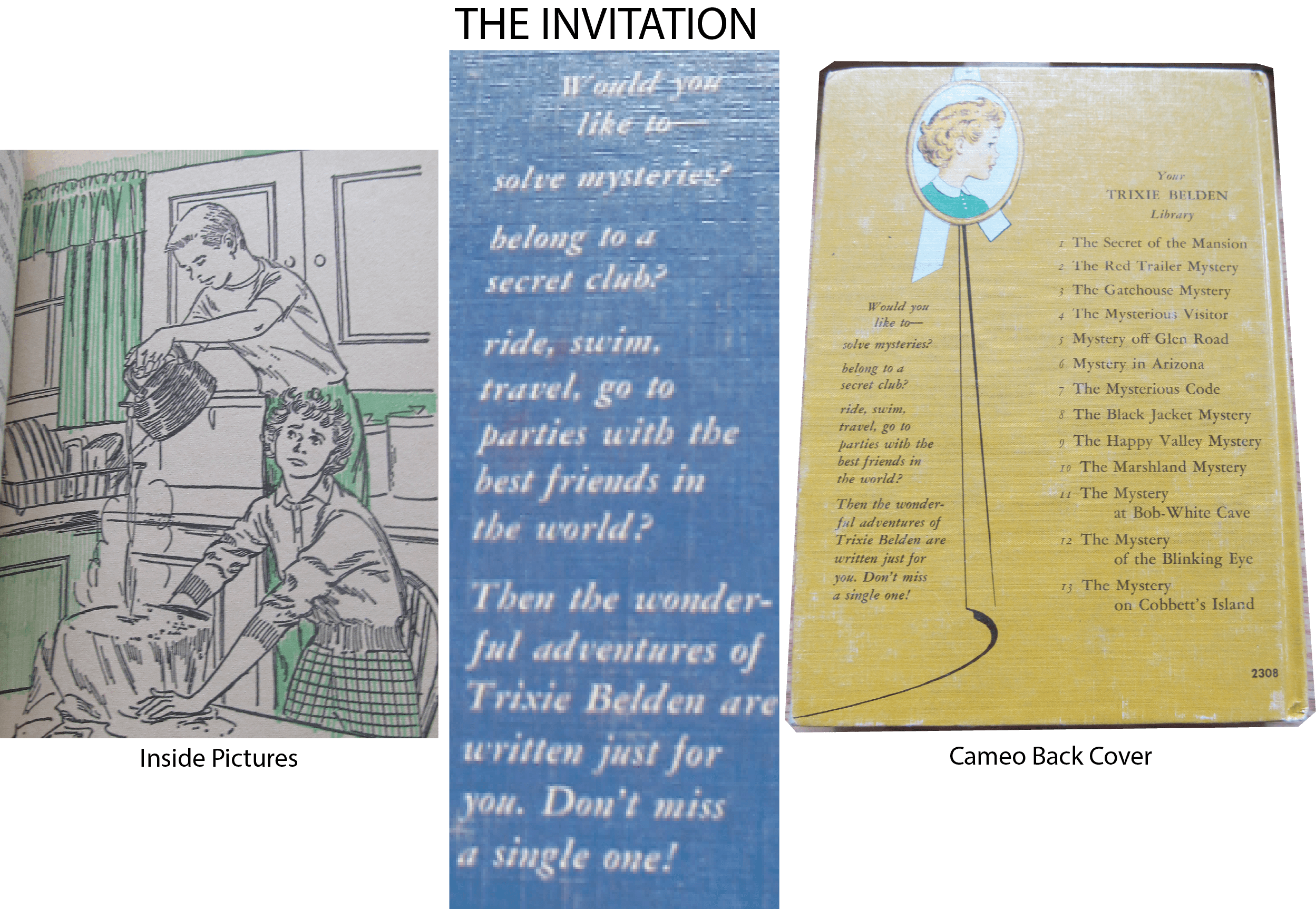
Fifth Edition: 1965
The Deluxe: #1 - 15
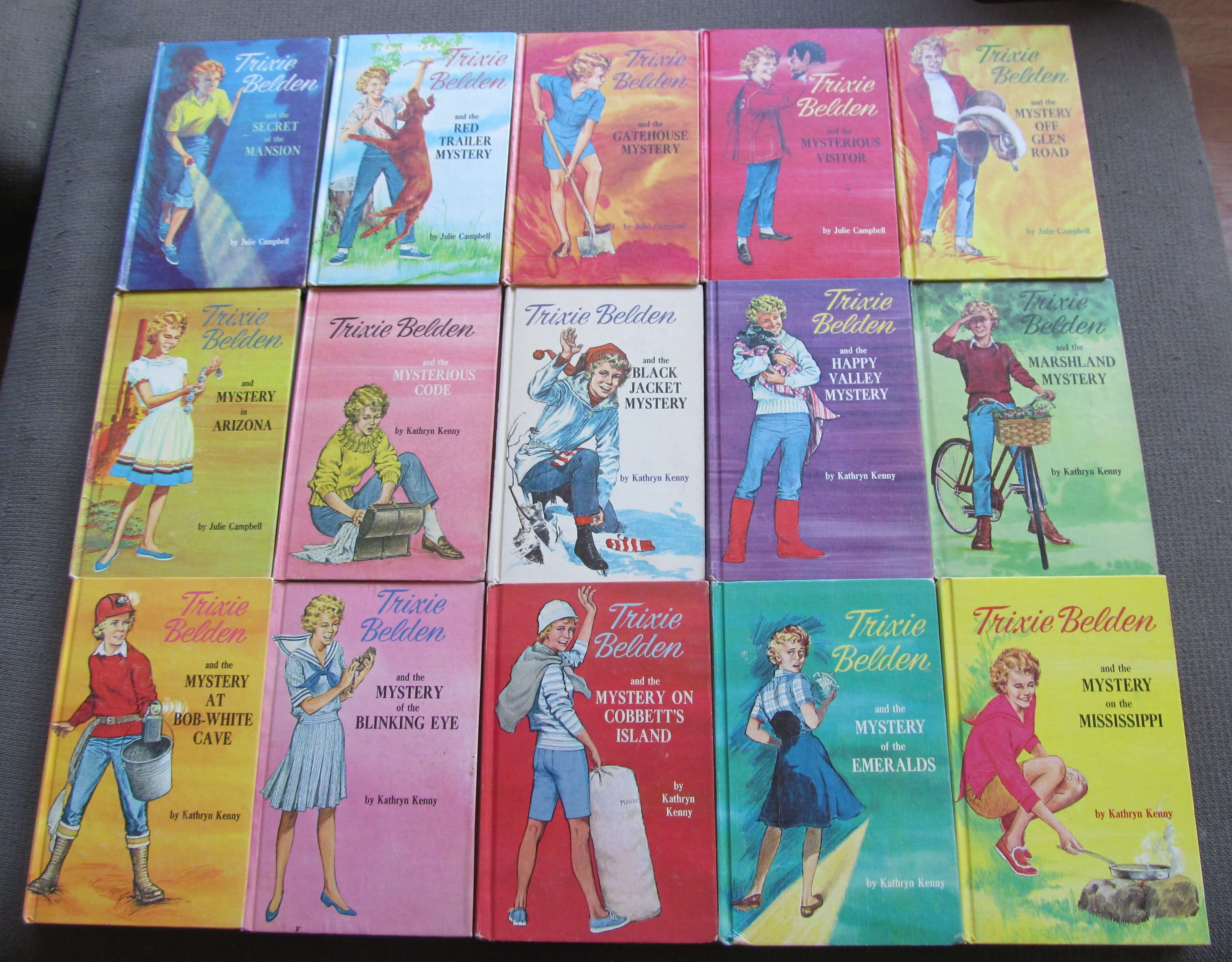
- Tall sturdy books with multi-colored hard cover
- Each cover pictures a large Trixie on the left holding something relevant to the action therein.
- "Trixie Belden" is written in the same italicized/cursive script across the covers.
- Inside covers (end papers) have nicely colored head-n-shoulder portraits of Trixie and Honey with their "cursive signatures." (See below.) Their smiles and their signatures match their personalities.
- Art work by Paul Frame (covers, some inside pictures) is a definite improvement.
- Some of the inside pictures are full color. (One of my favorites as a youngster is this one of Diana in Book #4.)
- Even the single colored pictures are more detailed.
- Unfortunately, these pics by Paul and company were not used in any other editions.
- Maybe we should form a committee and see if we can get Random House/Penguin to bring back the illustrations by Paul Frame (1918 - 1994.)
- The back cover also has the same written invitation on the back of the Cameos, inviting young readers to join Trixie and her club. But instead of a list of the books (which is in the inside) there is another color picture of a scene from the tale.
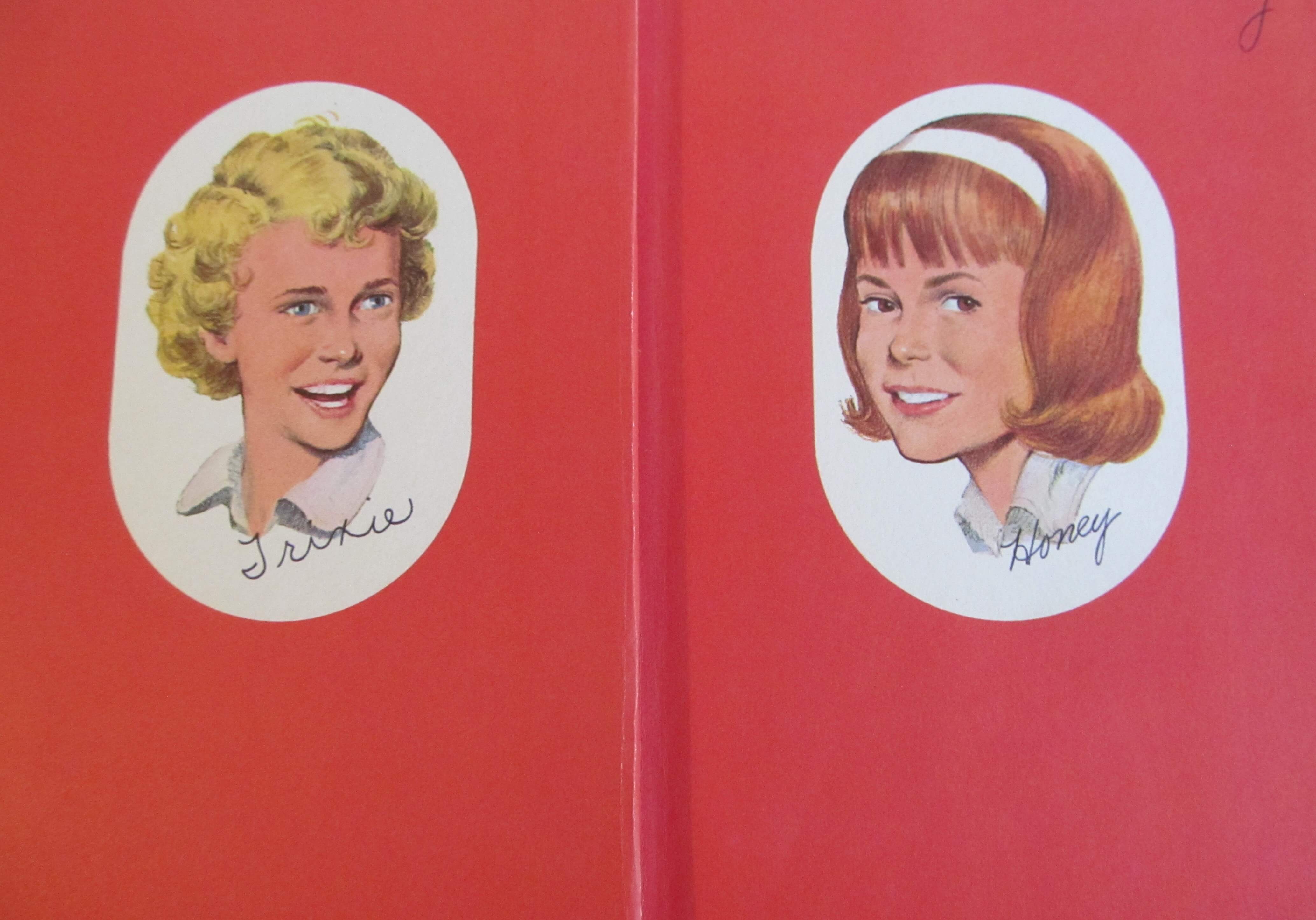
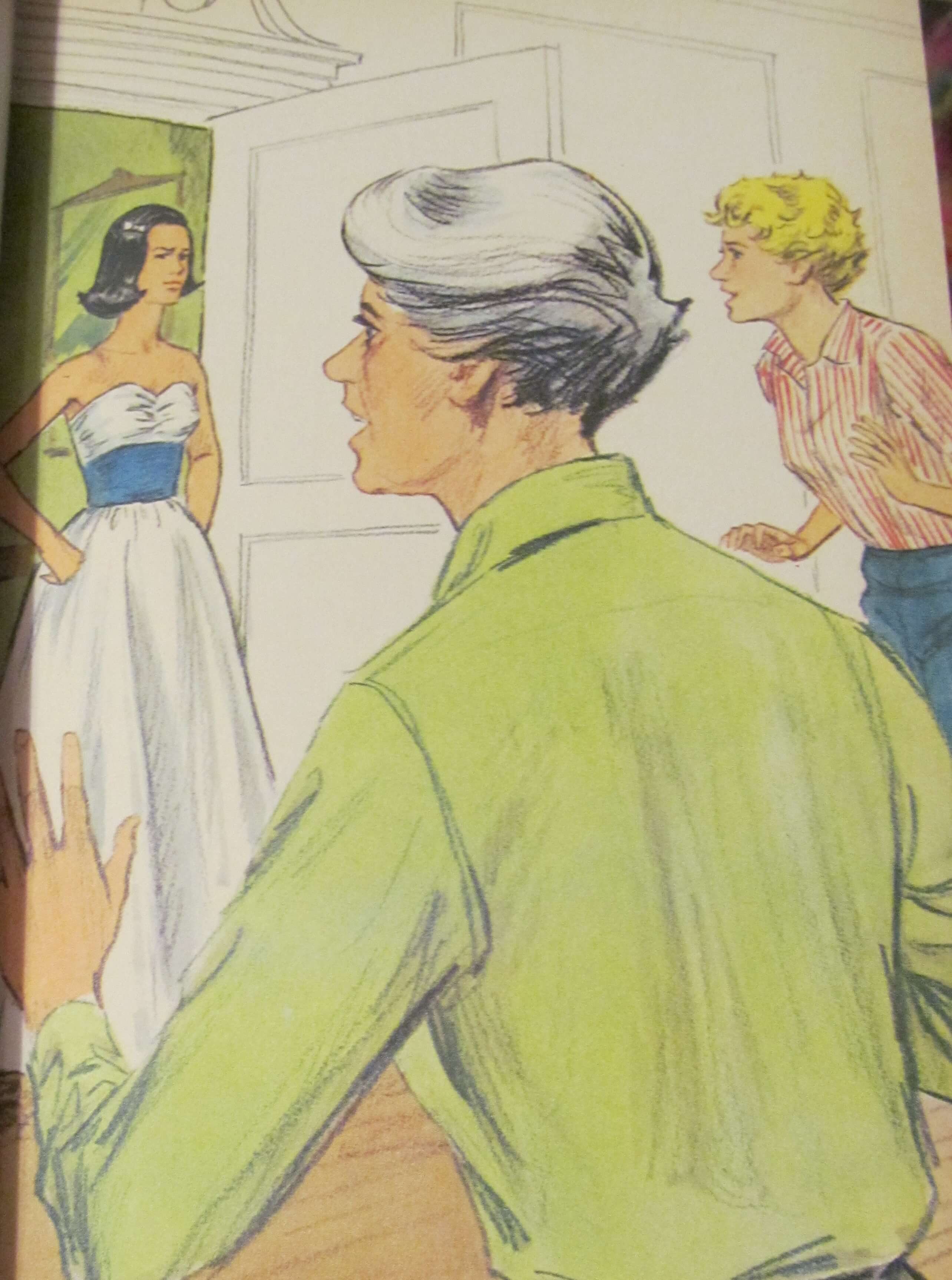
Sixth Edition: 1970
"Head & Shoulder" Or "Uglies"
Books #1 - 16
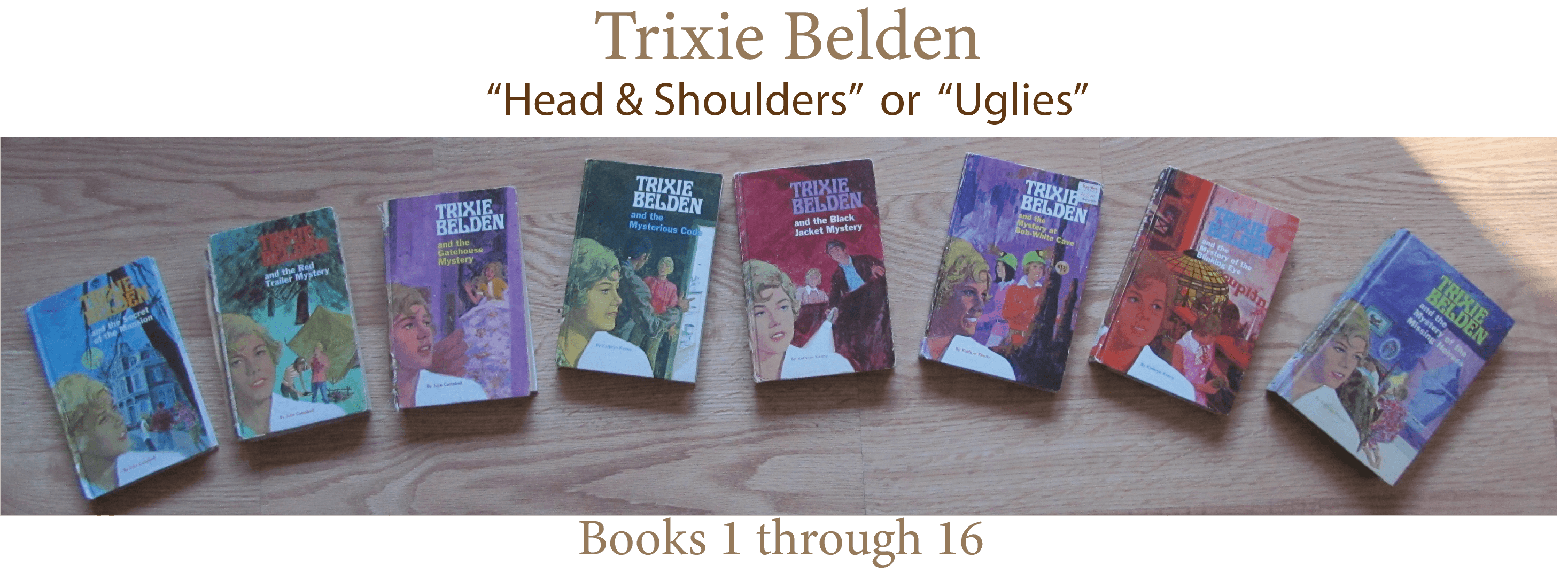
Not all titles are pictured.
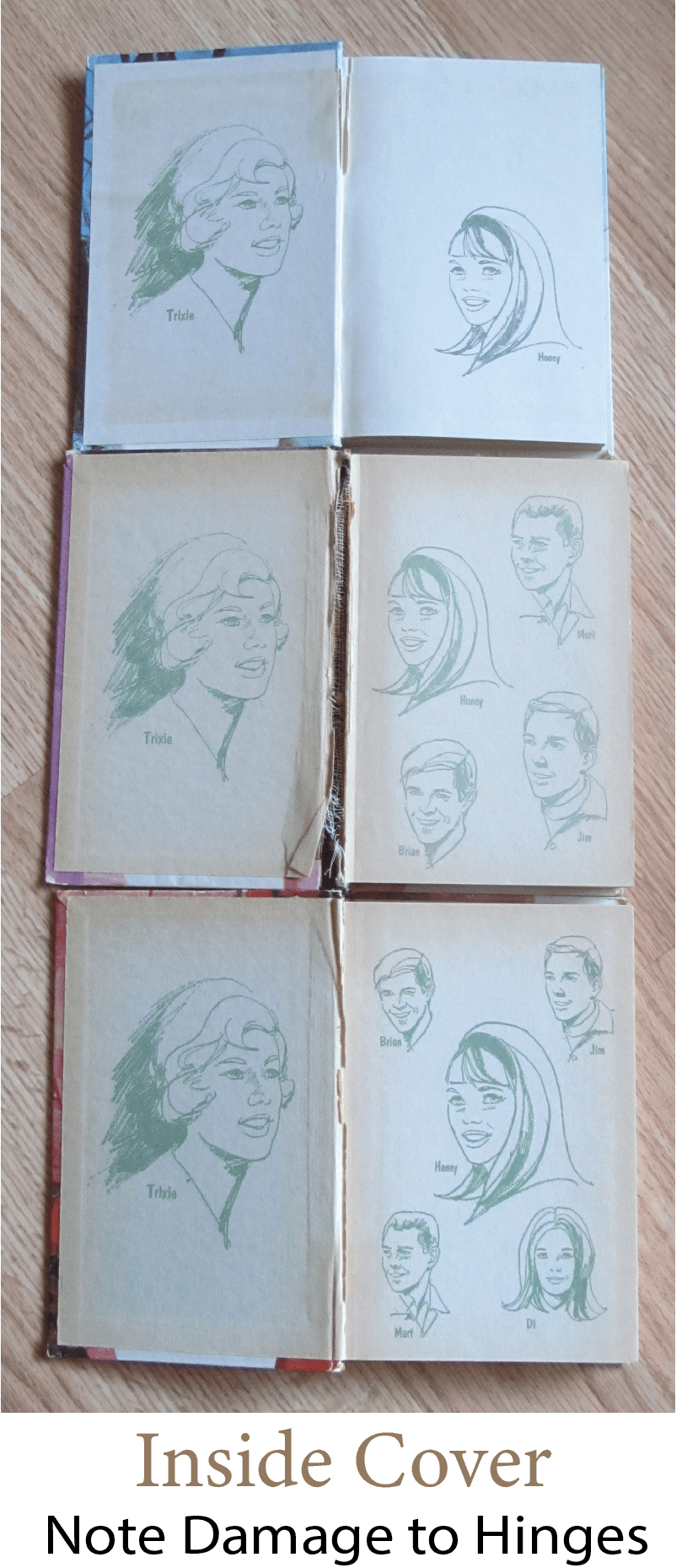 You probably know if you are holding an "Ugly" in your hand, but just in case you need help detecting it, here's what you would see:
You probably know if you are holding an "Ugly" in your hand, but just in case you need help detecting it, here's what you would see:
- A large picture of Trixie is on front and takes up the majority of the cover. It's a head and shoulders drawing, slightly different on each book.
- The illustrator was Larry Frederick. While the cover is not technically single-color, one color dominates so that the action scene is almost non-noticeable.
- A scene from the story is in the background.
- Inside covers are different in the front and back.
- Right hand side has large sketch of Trixie. Not as pleasing as the Deluxe pics, but a little more modern and mature than the originals by Mary Stevens.
- Left hand front cover has medium sketch of Honey.
- Some have smaller pics of Brian, Mart, and Jim in the back. Poor Dan gets left off.
- No other pics inside. Not even the small chapter headers.
- Economy won the day. Oh well. It's for kids who largely have outgrown pictures pretty much anyway. Right?
- If my memory serves me right (and it was a looooong time ago) I paid 79 cents for these at my local TG&Y store.
- The backs of some books have an exciting quote from the story. Others have a list of the TB Library, which is still evolving, but a lot slower with only one additional book.
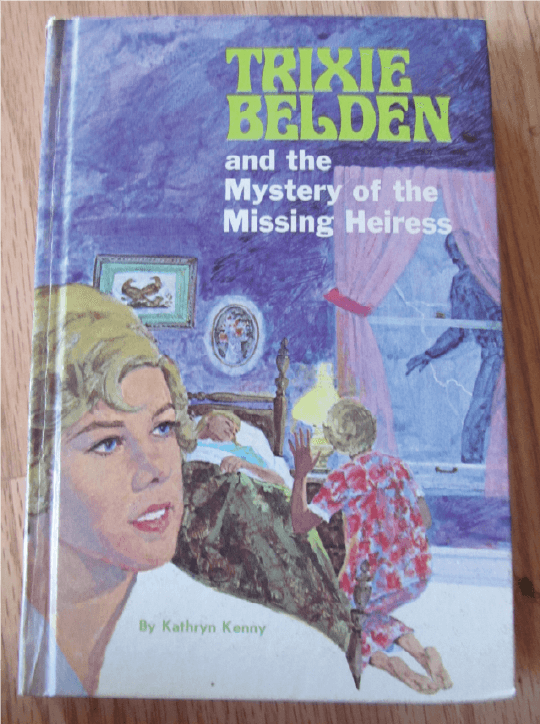 Here's an interesting thing about #16, the only tale that joined the Ugly Edition.
Here's an interesting thing about #16, the only tale that joined the Ugly Edition.
Jim's step-father reappears for the first time since Book 1, though he is frequently mentioned as a villain in every book in between. The first sixteen books are chronological. The seasons follow each other, and in sixteen the Bob-Whites have gone through the summer, fall, winter, spring, and the next summer together. With all their adventures, it seems like its been a long time.
The book actually states it has been two years, but you can follow the calendar for a one-year cycle. This is relevant to the books of the following editions.
Seventh Edition 1977 - 1980
Ovals: #1 - 34
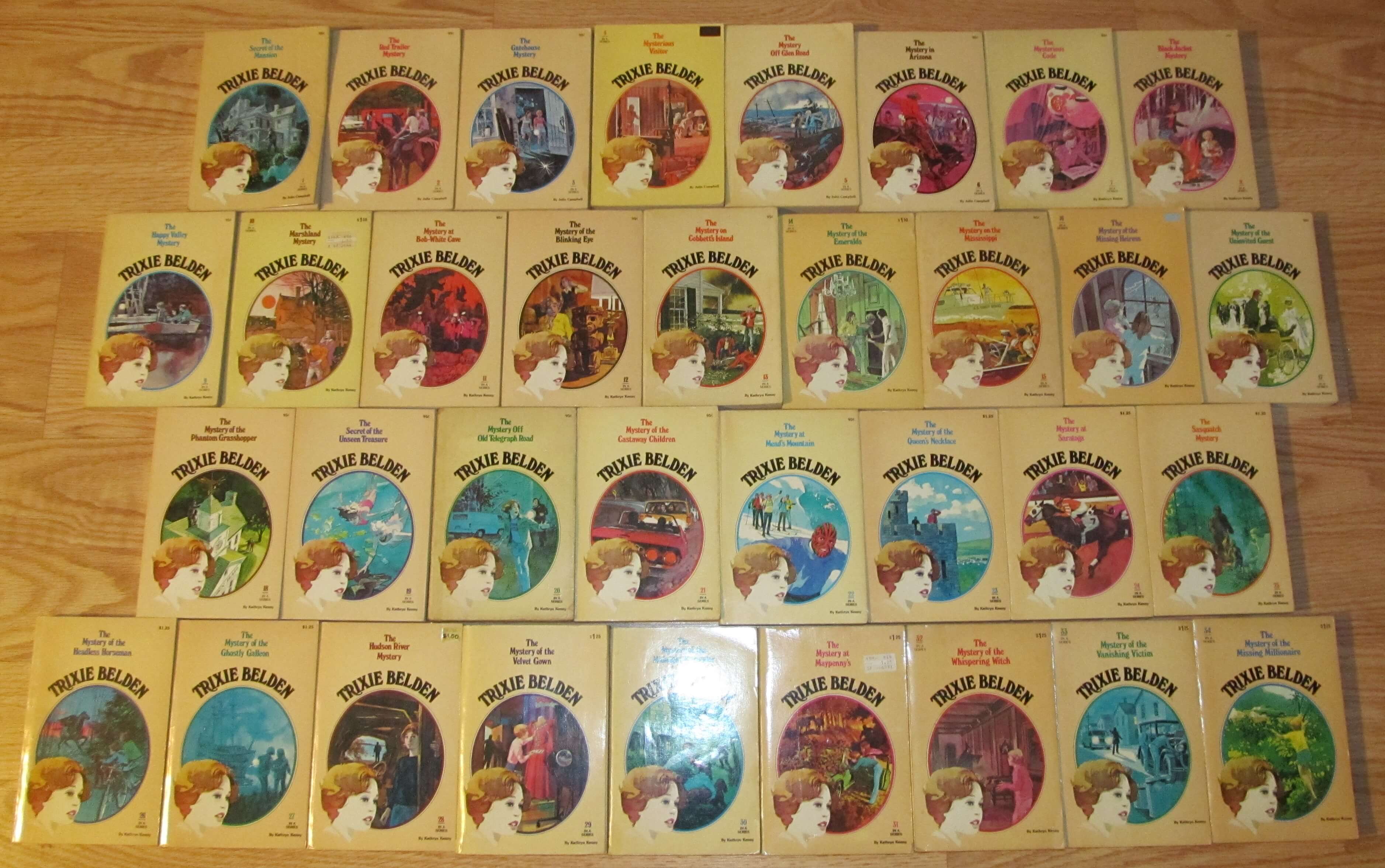
- It came out in paperback for the first time. (Yes, that was economical. But it was also a sign of a larger market capability.)
- The yellow covers featured a 4.5 inch oval on the front with an action scene from the story.
- Trixie's profile covered the lower left corner of the oval.
- Sorry, no other pictures, except for a portrait of Trix in a two inch oval on the reverse cover.
- Prices printed on the upper right hand corner were either 95 center or $1.25. (The 1970s had runaway inflation.)
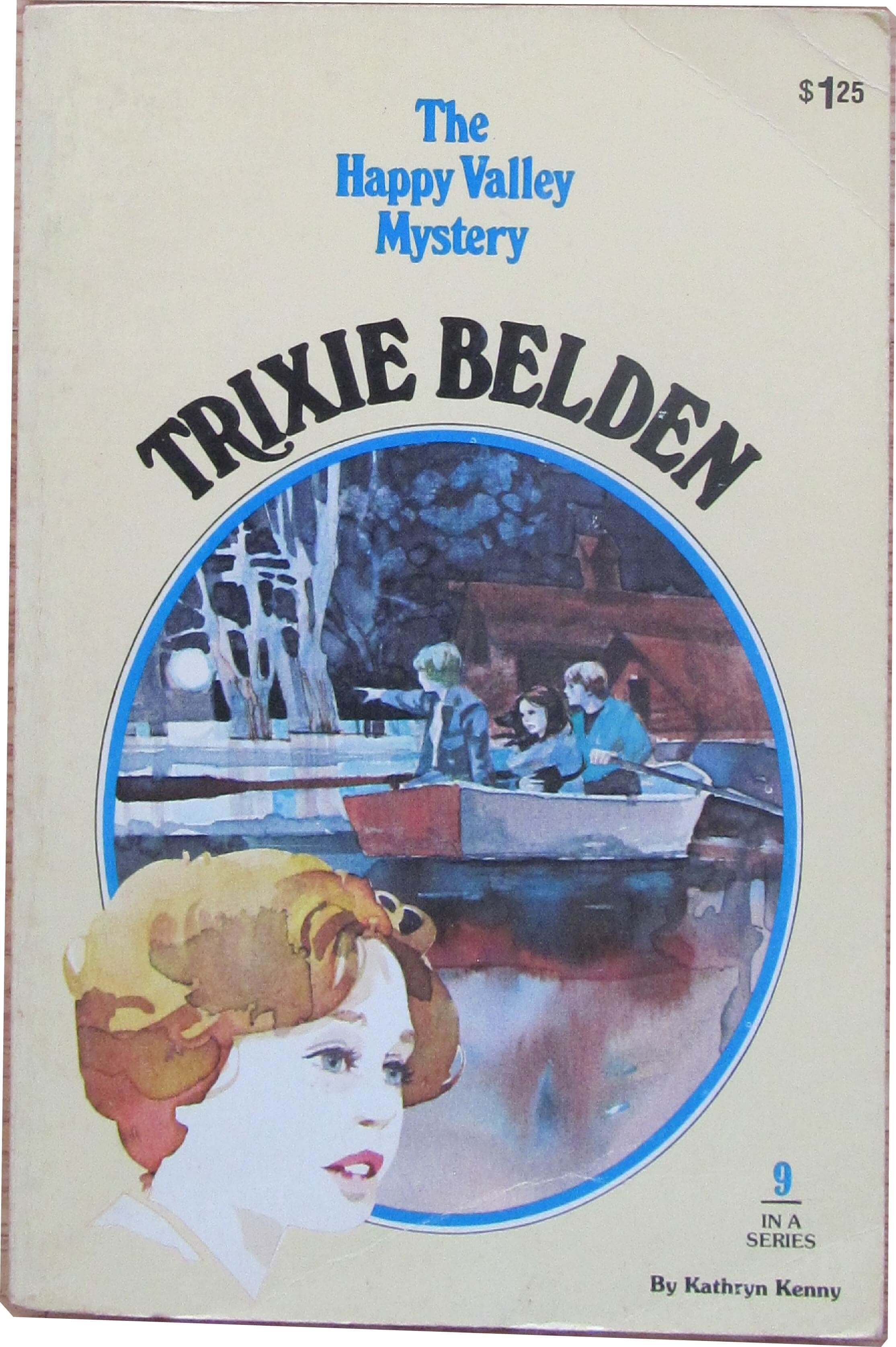 Besides the format of the book, there were a few other notables.
Besides the format of the book, there were a few other notables.
- #17 was first released in this edition. But it takes place immediately after (and with the same guest stars) as #16 - the only book first released in the Ugly edition.
- BUT, after #17, the order no longer follows the calendar, with the next story occuring a few weeks after the last.
- Trixie and company changed in these newer books. Previously, one could imagine it was the same Trixie - even though decades had passed. No longer. The Trixie of the 70s was living in a more complicated time. Even the crimes were often convulted schemes. Nothing was quite as simple as a pick-pocket who accidentally dropped a valuable diamond ring.
- Between the fifth and sixth edition, I had grown up. As a loyal fan, I bought and read some of the new books, but was disappointed in them. It wasn't the same Trixie. But then again, I wasn't the same reader. Later, I realized other readers had the same assessment of new books after they aged-out of the series, even when the dividing line in a different era.
Whatever else you might think of the series, and whether you liked these new titles or not, the "Your Trixie Belden Library" list (now on the inside fly) had doubled in length in three years.
It took Julie Campbell ten years to write the original six stories (1948 to 1958.) A variety of authors under the pen name "Kathyrn Kenny" took up the mantel and produced eleven more in twelve years (1958 to 1970). Then seventeen more stories are propogated in three years. No wonder they couldn't build on each other!
Love 'em or hate 'em, the Ovals had brought Trixie enmass to a new generation.
Eighth Edition 1984-1986
The Squares: #1 - 39

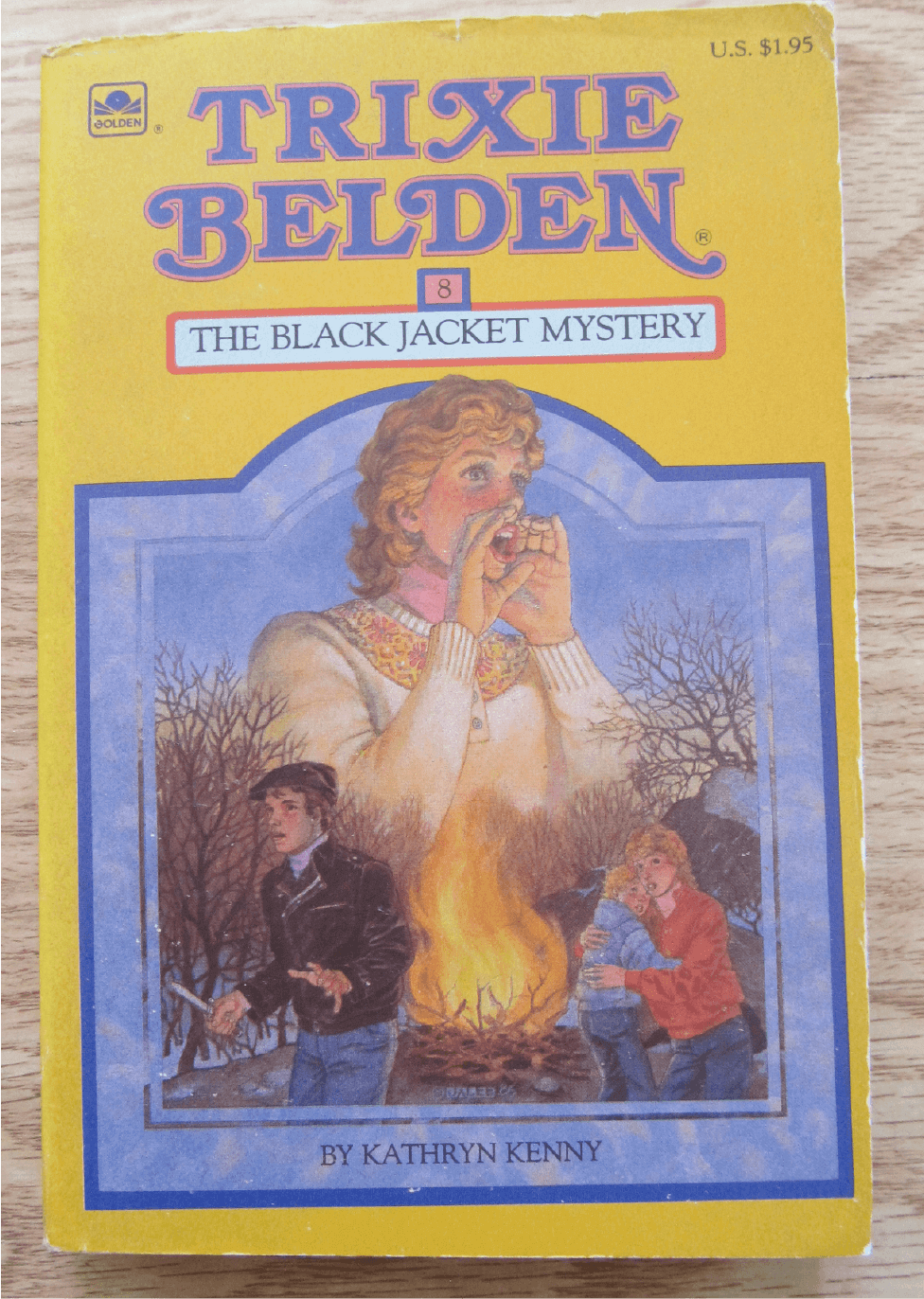
- This second paperback format was a modification of the Ovals.
- A square shape (with a rounded top) was centered on the front cover. A multi-color scene from the story attracted attention.
- A picture of Trixie merges from behind the scene but in front of the square/rounded shape. A unique feature.
- Trixie definitely looks like she has emerged from the 1940s & 50s, to take on the world of 1980s and 90s.
- The back cover also has a square shape. The invitation to join the club has been replaced with a one paragraph thriller from the book.
- The $1.95 price is printed on the front cover.
- #35, 36, 37, 38, and 39 are hard to find and - at this time - cost a significantly more amount of money than the $1.95 enscribed on the front.
Ninth Edition 2003
Glossy Edition:#1-15
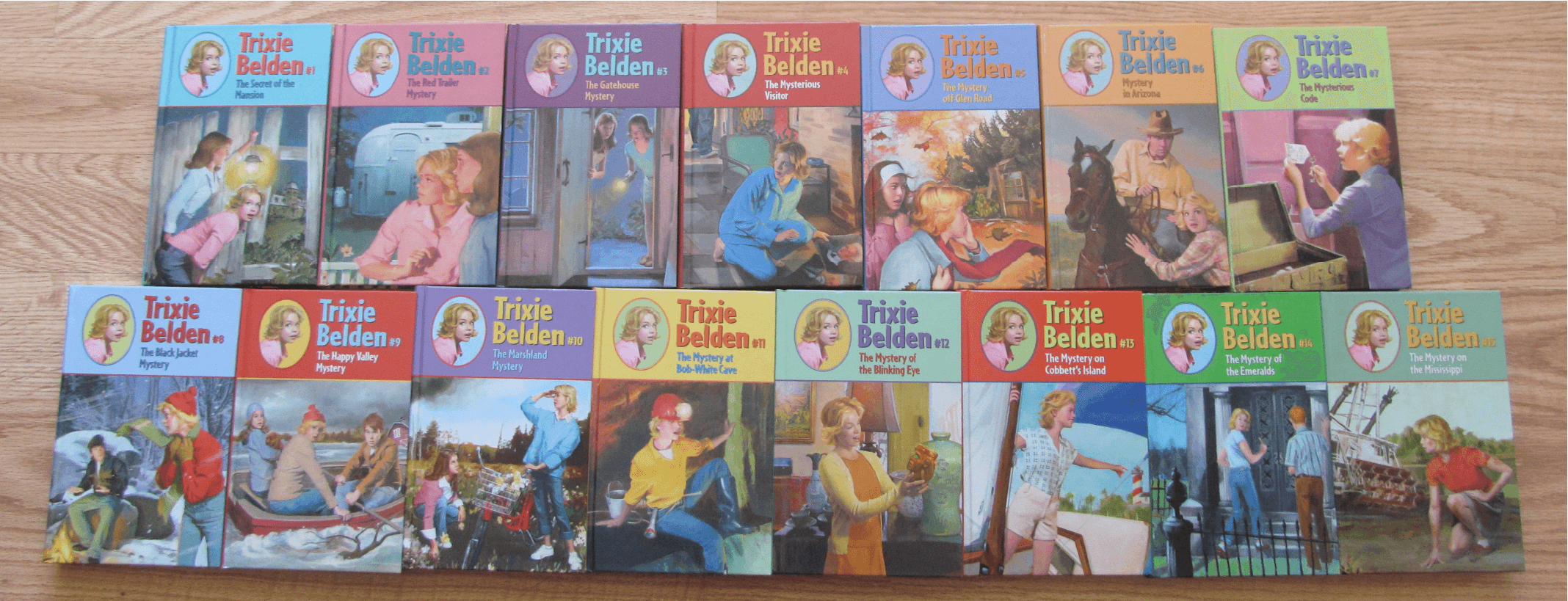
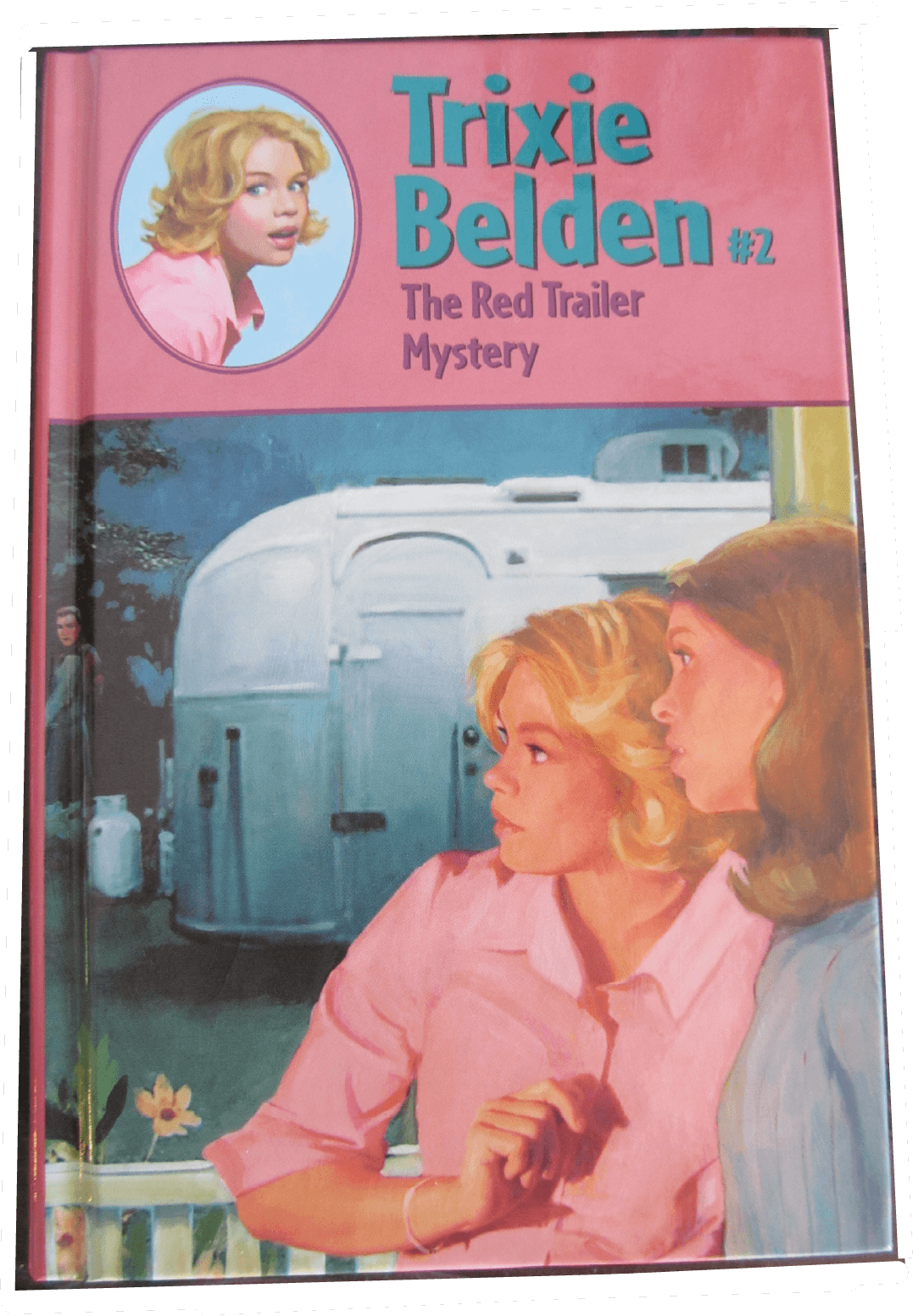
- Return to hardback with a glossy, full-color cover
- Sometimes call the Retro Version, no longer is the publisher trying to pretend the Bob-Whites are a modern club.
- The attractive cover art by Michael Koelsh depicts a scene from the story displayed in its original era.
- Mary Stevens + Company's original black and white sketches are inside.
- The detective-inclined reader will note on the back that Random House took possession of Western/Whitman/Golden companies.
- The bottom left corner of the back has the ISBN printed with a $6.99 price.
Here are a few unique facts about the series:
- #16 to 39 were ditched. This was a return to the 15 stories of the 50's & 60's.
- Our original author, Julie Campbell Tate, died in 1999. These were the first books she would not have seen. I imagine she would have been proud to hold this version of her creation.
Tenth Edition 2025
Not officially named by collectors, this newest edition has these features:- Paperback has returned.
- The pictures on the cover are almost cartoon-like. (Think graphic novel style.)
- Celia Crampien is the cover artist, while Mary Stevens original diagrams are displayed inside. Gone (for good?) are Paul Frame's multi-color paintings.
- Random House Kids is on the ISBN on the back cover, but you find out inside that Penguin Books has taken over Random House.
- Yearling Mystery is also listed on the book. I mean, finding out who owns the copy-right would take Trixie's detective skills.
- $8.99 is the price. Even the youngest sleuths can detect inflation when the $1.00 hardcover of the 1958 is laid next to the $9.00 economy paperback of today.
We'll have to wait to find out!


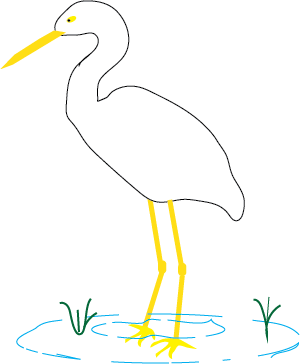
About Our Site
Hands-On Learning

